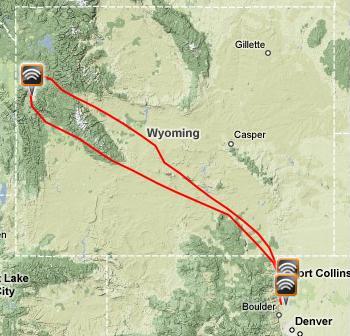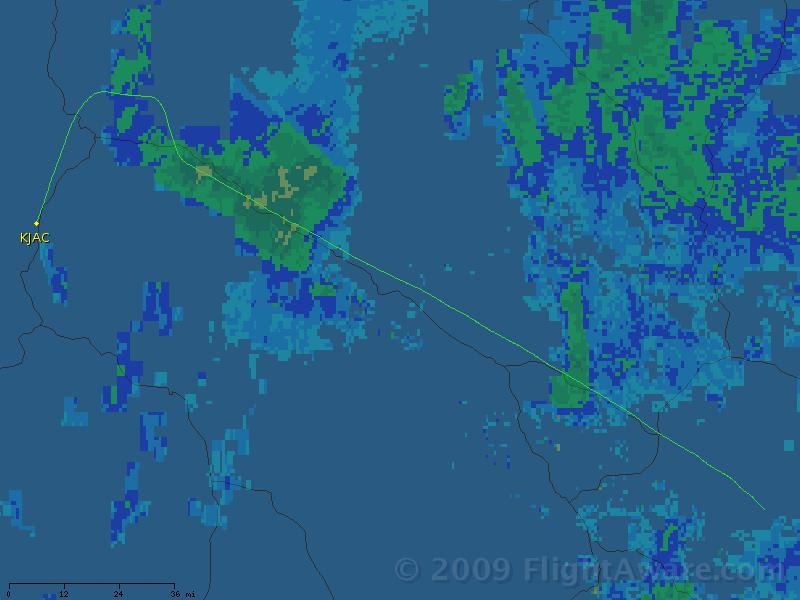You can read my thoughts on flight following in my other VFR flight following blog post. I think it is a great service that everybody should use on cross countries.
Here are some other articles to check out:
http://av.mdickinson.com/articles/flight_following.htm
http://answers.yahoo.com/question/index?qid=20090324185928AALFv7m
http://answers.yahoo.com/question/index?qid=20090429190527AAg6XDh
Call FSS and activate flight plan
Tune Freq 122.4
Me: Denver Radio, Skylane 9699G, listening on 122.4, ready to activate my flight plan to Colorado Springs
Denver Radio: Aircraft Calling 122.4, standby, number 2
I often have to wait my turn to talk with FSS.
Denver Radio: Aircraft calling 122.4, say request.
Me: Denver Radio, Skylane 9699G, ready to activate my flight plan to Colorado Springs 15 past the hour
Denver Radio: 9699g, Flight plan to Colorado Springs activated, Local altimeter setting at Metro is 3002. contact flight watch on 122.0, pilot reports appreciated
Me: 3002 for 9699g, thanks.
Ask for ATC frequency if I do not know it.
Get VFR Flight Following
Tune Freq 126.1
Me: Denver Approach, Skylane 9699g, south of Longmont, VFR request
Denver Approach: Skylane 9699G , Denver Approach, say request
Me: Denver Approach, Skylane 9699g, 6,500 south of Longmont, request flight following to Colorado Springs
Denver Approach: Skylane 9699g Squawk 0432, ident
Tune Transponder and hit the ident button. No need to respond if he indicated to ident. Otherwise repeat back.
Denver Approach: Skylane 99g, Radar contact, 10 miles north of Metro airport, altitude 8,500, altimeter 3002
Me: 3002 for 99g
Maybe in the middle sometime, there will be a report of trafic.
Denver Approach: Skylane 99G, Traffic 10 oclock, 7500, 5 miles, north bound
Me: 99G looking for traffic
5 miles out is a ways to see a small plane. If they get closer, you will probably see them. If they get closer, ATC will mention again probably and suggest vectors to avoid the other aircraft if it becomes a concern.
Denver Approach: Skylane 99G, contact denver approach on 128.45
Me: 128.45 for 99g, thank you.
Tune Freq 128.45
Me: Denver Approach, Skylane 9699g, level 8500
Denver Approach: Skylane 99g, Denver Approach, altimeter 3002
Me: 3002 for 99g
Me: Denver Approach, Skylane 99g climbing to 9,500
Denver Approach: 99g, Denver Approach, roger
Denver Approach: Skylane 99G, contact Springs approach on 118.5
Me: 118.5 for 99G, thanks
Tune Freq 118.5
Me: Springs Approach, Skylane 9699g level 9,500
Springs Approach: Skylane 99G, Springs approach, altimeter 3004
Me: 3004 for 99G
Listen to ATIS on second radio. Or ask Springs approach to go off frequency to listen to it.
Me: Springs Approach, Skylane 9699g request to go off frequency to listen to ATIS
Springs Approach: Skylane 99G, frequency change approved, report when back on frequency.
Listen to ATIS
Me: Springs Approach, Skylane 9699g back on frequency. Have information India.
Springs Approach: Skylane 99g, roger
Springs Approach: Skylane 99g, contact Springs tower on 119.9
Me: 119.9 for 99g, thanks
Tune Freq 119.9
Me: Springs Tower, Skylane 9699g, 9,500 inbound full-stop with India
Springs Approach: Skylane 9699g, Report 5 mile final
Me: Report 5 mile final for 99g
Me: Springs Tower, Skylane 99g, 5 mile final
Springs Tower: 99G, cleared to land 17 Right
Me: Cleared to land 17 Right, 99G
Springs Tower: N9699g, turn right first taxiway, contact ground point 7
Me: Contact Ground point 7 99g
Tune Freq 121.7 (Ground point 7)
Me: Springs Ground, 99G at Alpha 2, Taxi to the Jet Center
Springs Ground: 99g taxi to parking via alpha 2
Me: Taxi via Alpha 2, 99G
Find a spot to park and look for a line person if they appear to help with parking.
I usually close my flight plan after landing on my cell phone through FSS.
Discontinuing Flight Following
After using flight following and landing at a Class B/C/D airport, change Transponder to 1200 after landing or at least before leaving. If going to a non-towered airport, you will likely be told to change to 1200 in the air approaching the airport. You can request to cancel advisories as well so that you can change frequencies to the local airport.
Longer Cross Countries
Longer distance travel will not be much difference. Actually it is likely to be easier and more relaxing. In general, all there will be is a new freq maybe every 1/2 hour or so.
That is mostly it. So that will give you an idea of what to expect and what to say.
/Brian




